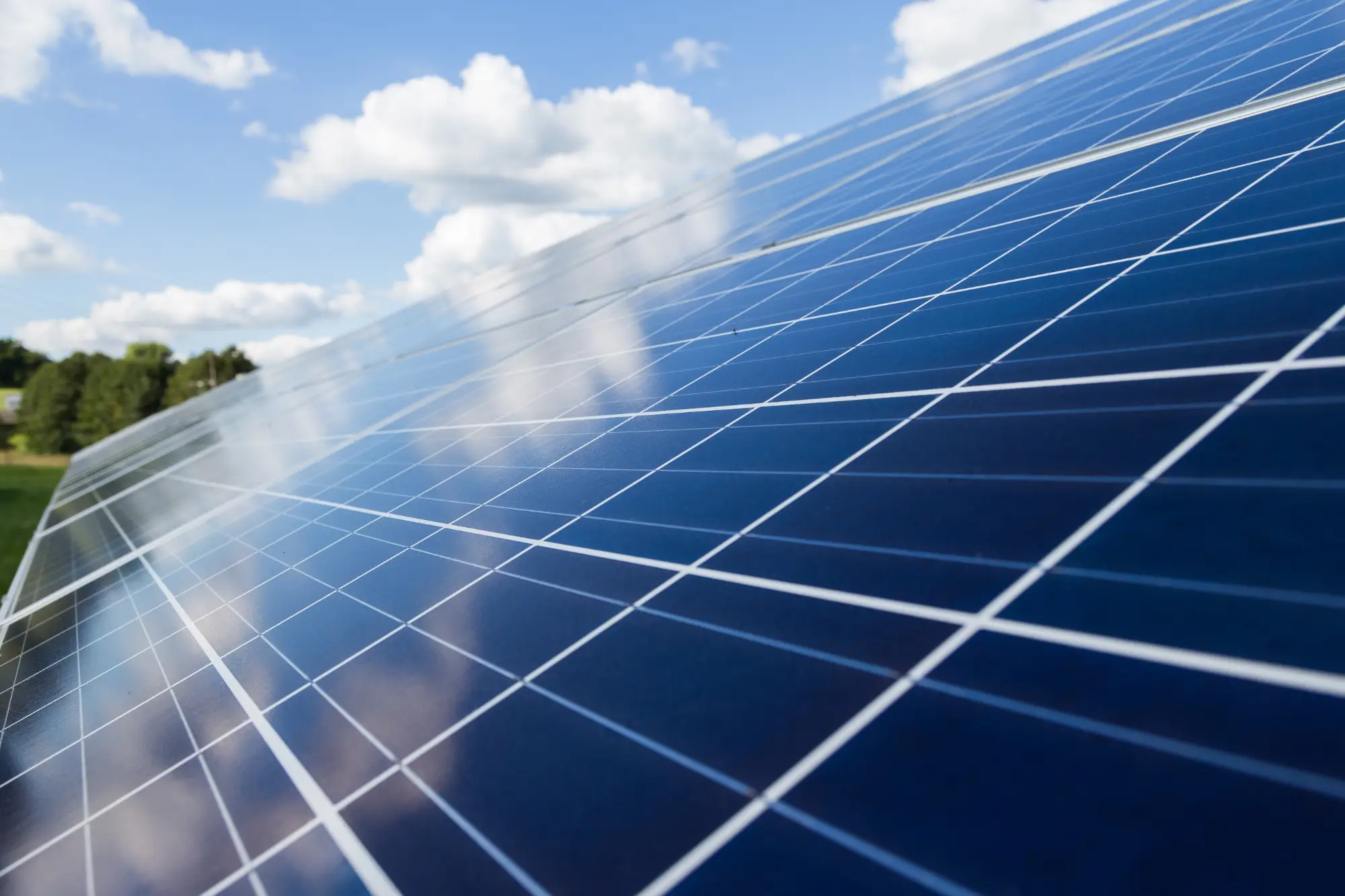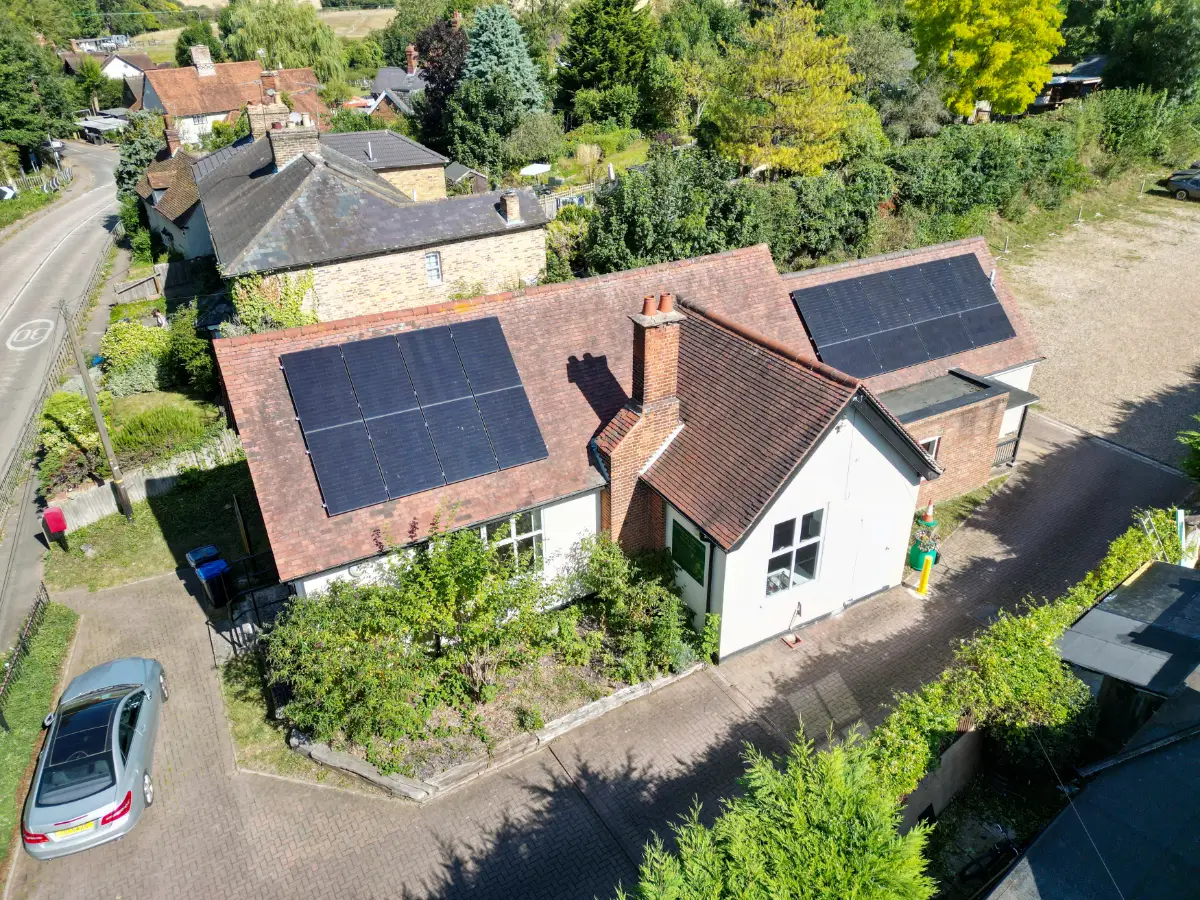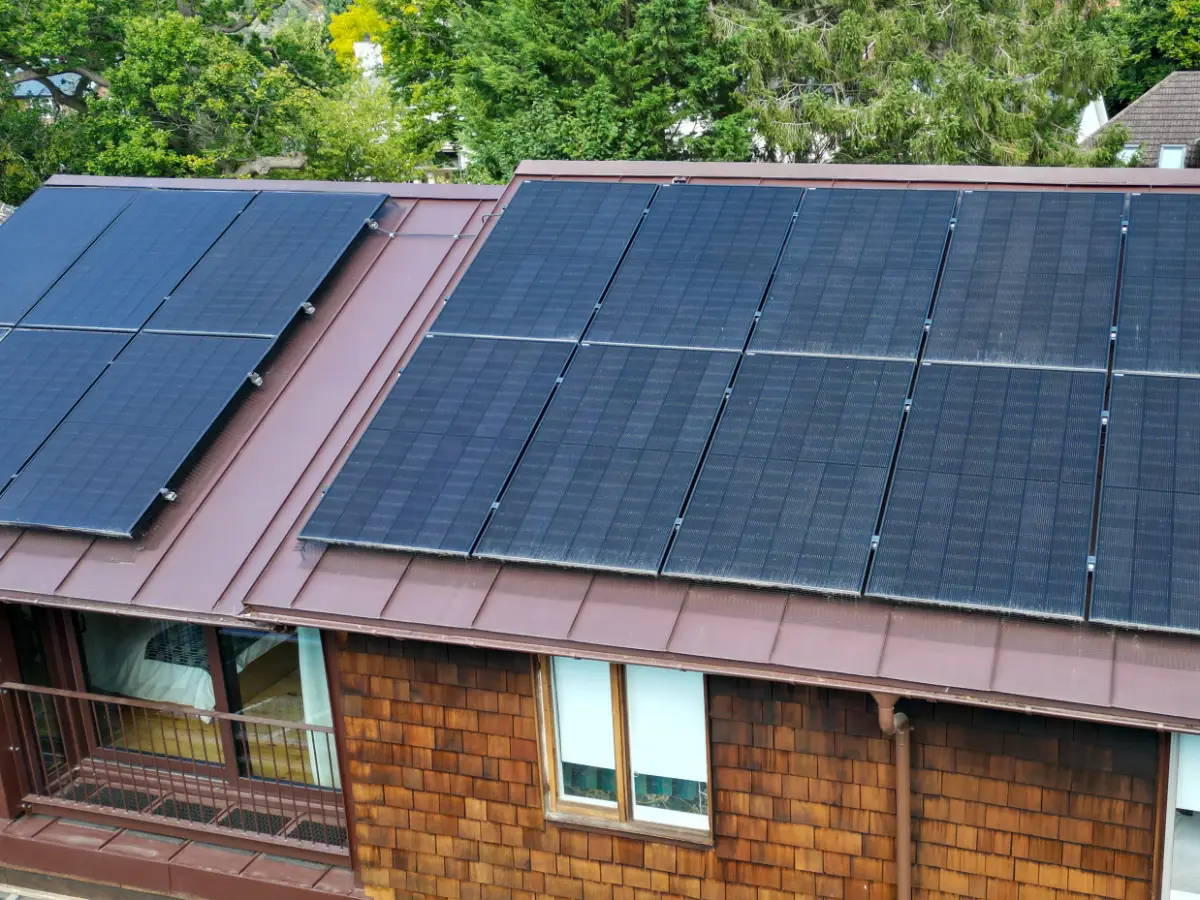Guide to Solar
Considering solar PV for electricity production involves several key factors. This guide explains the process step-by-step.

How Solar Cells Work
A solar PV panel (sometimes called a module) consists of several photovoltaic cells joined together to create a module – this is the basic building block of a solar PV system. Several modules are connected to create an array, and the size of the array makes up the kWp (kilowatt peak) size that can be fitted on your roof. This kWp solar PV system size dictates the system’s output under Standard Test Conditions. The various module technologies have different expected annual outputs in the UK.
Put simply, when exposed to light, the cells generate electrical energy (DC current), which is conducted away to an inverter to create mains electricity (AC current). Your property can then use this when your array is generating it.
PV cells are mainly manufactured from silicon, a semi-conducting material also found in many modern devices such as PCs and TVs. PV cells are classified as a crystalline, thin film or a combination of these technologies. The combined form of cells produces the most efficient solar PV module commercially available.
Not all solar PV cells and solar panels are the same quality. A solar PV system is a long-term investment, and you need to be sure of the product you are buying as it should generate solar electricity at its optimum for many decades. The diagram shows how a typical solar PV system works:
![shutterstock_793654870_[Converted]_2000](https://chelsfieldsolar.co.uk/wp-content/uploads/2024/12/shutterstock_793654870_Converted_2000.webp)

Types of Solar PV Panels
Solar PV systems are sized in kWp (kilowatt peak), which is a measure of their maximum output in Standard Test Conditions. However, in the UK, we don’t see much in terms of ideal conditions, so a system needs to be considered in terms of its electrical output. This output is measured in kWh (kilowatt hours), which is the same measurement as the electrical units shown on an electricity bill.
Different panels and technology generate various outputs per kWp, albeit we need to use a generic government standard formula that can over-inflate and under-inflate the actual annual output depending on the panel type, location, orientation, inclination, etc. We will advise you of the differences in PV panel technology.
There is a lot of conflicting information regarding the efficiency of PV panels. This is mainly due to how the manufacturers give their information, which can be somewhat deceptive unless you know what their data represents.
Understanding solar PV panels
What is PV? PV stands for photovoltaic, derived from Greek words meaning ‘light’ and ‘volt.’ PV panels are commonly known as solar panels, but this term can be confusing as it may also refer to solar thermal panels.
kWp (kilowatt peak)
Represents a system’s maximum power under ideal test conditions, like 4 kWp. It doesn’t guarantee a specific energy output.
kWh (kilowatt-hour)
The unit of electricity. For example, 1 kWh is equal to 1 unit of electricity.
Cell efficiency
PV Cells are the individual components within a PV panel that convert sunlight into electricity. High cell efficiency is crucial but doesn’t guarantee overall panel performance. Good cells can still be part of poorly performing panels.
Module efficiency
This is a more accurate performance indicator than cell efficiency but measured under controlled lab conditions. Real-world performance may differ due to factors like temperature.
Size matters
Compare panels of the same kWp size to avoid misleading comparisons. Larger panels may appear more efficient due to test conditions.
Real-life performance
Panel performance varies outside the lab and can decrease with higher temperatures. Panels behave differently in real-world conditions, so it’s important to consider how they perform in daylight.
Output tolerance
Panels have slight manufacturing variations. A panel rated at 240Wp may produce slightly more or less. Manufacturers often provide a +/- tolerance, but some only guarantee a minimum output, which is a positive indicator of quality.
Degradation
Solar panels degrade over time, with high-quality panels showing slower degradation than low-quality ones. This degradation rate depends on the panel’s build quality.
Failure rates
PV panels are generally reliable, with failure rates under 5% over 20 years. Panasonic, for example, has a failure rate of just 0.005% based on their extensive track record.
Vertical integration
Refers to a manufacturer controlling the entire panel production process. Companies like Panasonic and SolarWorld are vertically integrated, ensuring higher quality. In contrast, some manufacturers source parts from various suppliers, which can affect panel quality.
Installation types
PV panels can be installed on top of roofs, semi-integrated with conventional tiles, or fully integrated using solar tiles or on flat roofs. We advise on the best technology for your specific project.
Suitability factors
Consider the following when assessing your property’s suitability for solar PV:
- Orientation: South-facing roofs are optimal. Tools like Google Maps can help determine your roof’s orientation.
- Roof size: The available space dictates how much solar PV can be installed.
- Roof type: Pitched roofs need careful positioning for rain runoff and wind turbulence. Flat roofs offer various installation methods, like ballasted systems or ‘A-frames.’
- Positioning: To maximise output, avoid shading from trees and neighbouring properties and obstructions like chimneys and dormers.

Technical considerations
Dimensions
We provide accurate estimates using satellite images or photos of your building. If your property has had a recent extension, it may not show on some of the satellite programmes, which may affect the solar PV system solutions we consider for your property. However, we always confirm details by carrying out a free survey.
Electrical
As NICEIC approved contractors, we handle the electrical installation and Part P Building Regulations approval.
Structural
We ensure the added weight to your roof covering complies with Part A of building regulations. We perform a basic calculation of this ratio to ensure the system is within the relevant guidelines. Contact the council building control department or an independent structural surveyor if you have concerns.
Planning permission
Generally not required, except for listed buildings, specific conservation areas or for certain designs on commercial properties. Larger ground mounts also require planning permission.
Inverters
Inverters convert DC electricity from solar PV panels into usable AC electricity for your property. We recommend the best inverter type for your project, whether string inverters, microinverters, or voltage-optimised systems.
Grid Connection
Post-installation, we notify the network operator via what is known as a G98 process. Prior approval will be needed for larger systems over G99 (projects above 3.68kW or with a battery).
Ready to find out more?
Contact us for a free survey and personalised advice for your solar PV project
